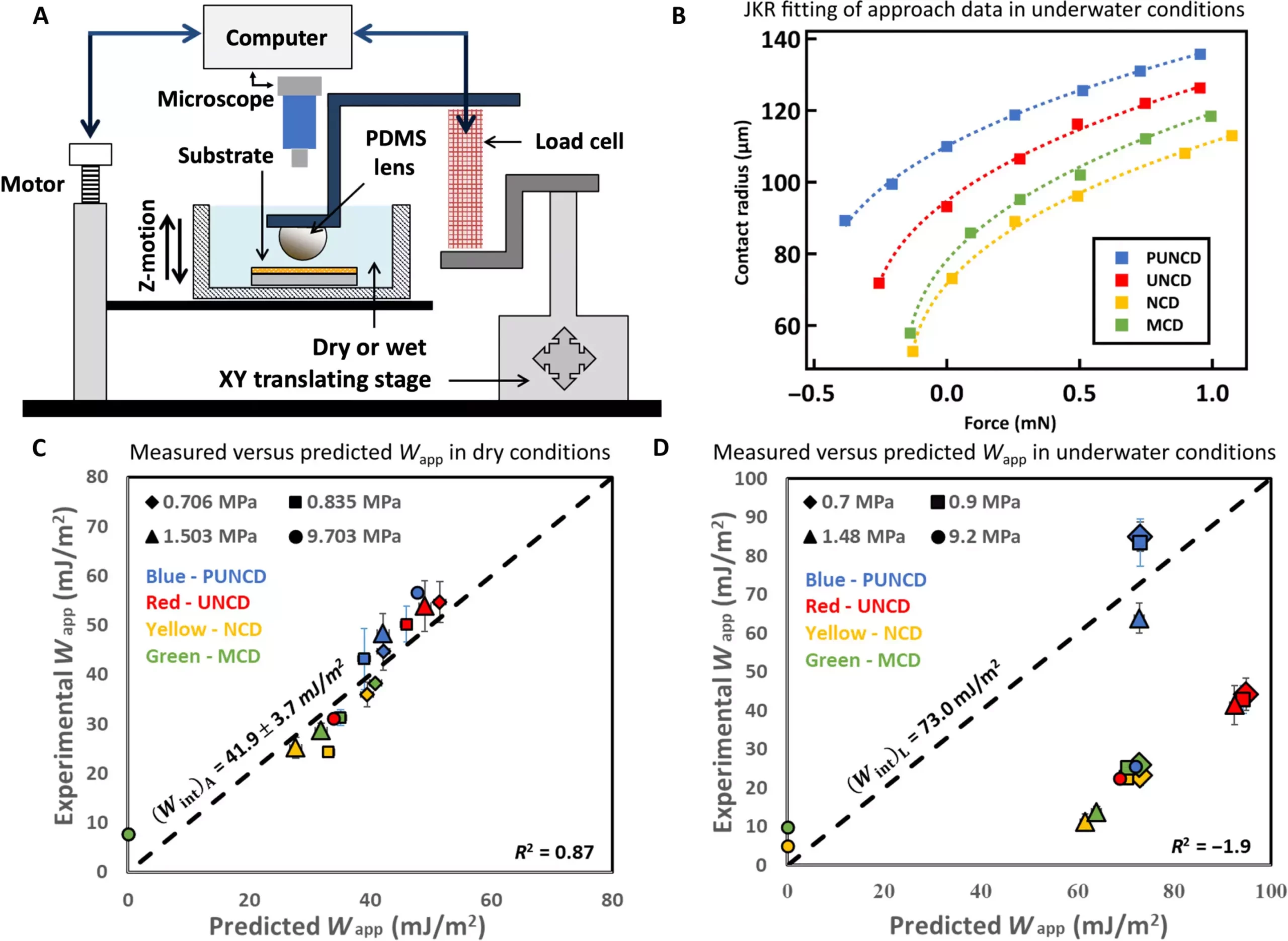In a groundbreaking study conducted by scientists at the University of Akron and the University of Pittsburgh, long-held assumptions about the role of water in adhesion have been overturned. The research, led by Dr. Ali Dhinojwala, has revealed that water can actually enhance adhesion under controlled conditions, challenging the traditional view that water hinders molecular bonds necessary for effective adhesion.
The implications of this research are profound, particularly in the field of biomedical applications. The findings could potentially revolutionize industries worth billions of dollars globally, with applications ranging from bandages to health monitoring sensors for moist skin. Advanced adhesives that could replace sutures may also benefit from this research, paving the way for more effective and innovative solutions in the medical field.
Traditionally, water has been viewed as a hindrance in achieving strong adhesion on wet, rough surfaces. However, Dr. Dhinojwala’s team, in collaboration with researchers from the University of Pittsburgh, the University of Freiburg, and Argonne National Laboratory, made a significant breakthrough in understanding the complex interplay between water, surface roughness, and adhesion dynamics. By measuring the adhesion of a soft elastomer to precisely engineered rough surfaces, the team discovered that water can unexpectedly enhance adhesion during detachment, challenging previous assumptions.
Challenging Traditional Views
Contrary to expectations, the presence of water initially disrupts adhesion by preventing molecular contact over a significant portion of the surface area. The energy required to deform the elastomer and conform to surface roughness is also increased in the presence of water, reducing initial adhesion. However, during detachment, the presence of water increased adhesion by nearly four times, highlighting the surprising benefits of water in the adhesion process.
Through analytical models and surface-sensitive spectroscopy, the research team demonstrated that water is trapped in nanometer-sized pockets, contributing to the enhancement of adhesion during detachment. By understanding how water interacts with surface topography, it may be possible to harness roughness to enhance adhesion, similar to how geckos use their toe pads to climb wet surfaces. This challenges the traditional view that water universally impedes adhesion and opens up new possibilities for leveraging water in adhesion science.
Dr. Dhinojwala’s team aims to further refine these findings and develop practical applications that capitalize on the surprising benefits of water in adhesion science. By continuing to explore the role of water in adhesion, new opportunities for innovation and advancement in various industries may emerge. This research has the potential to reshape our understanding of adhesion processes and pave the way for the development of novel adhesion technologies that leverage the unique properties of water.


Leave a Reply